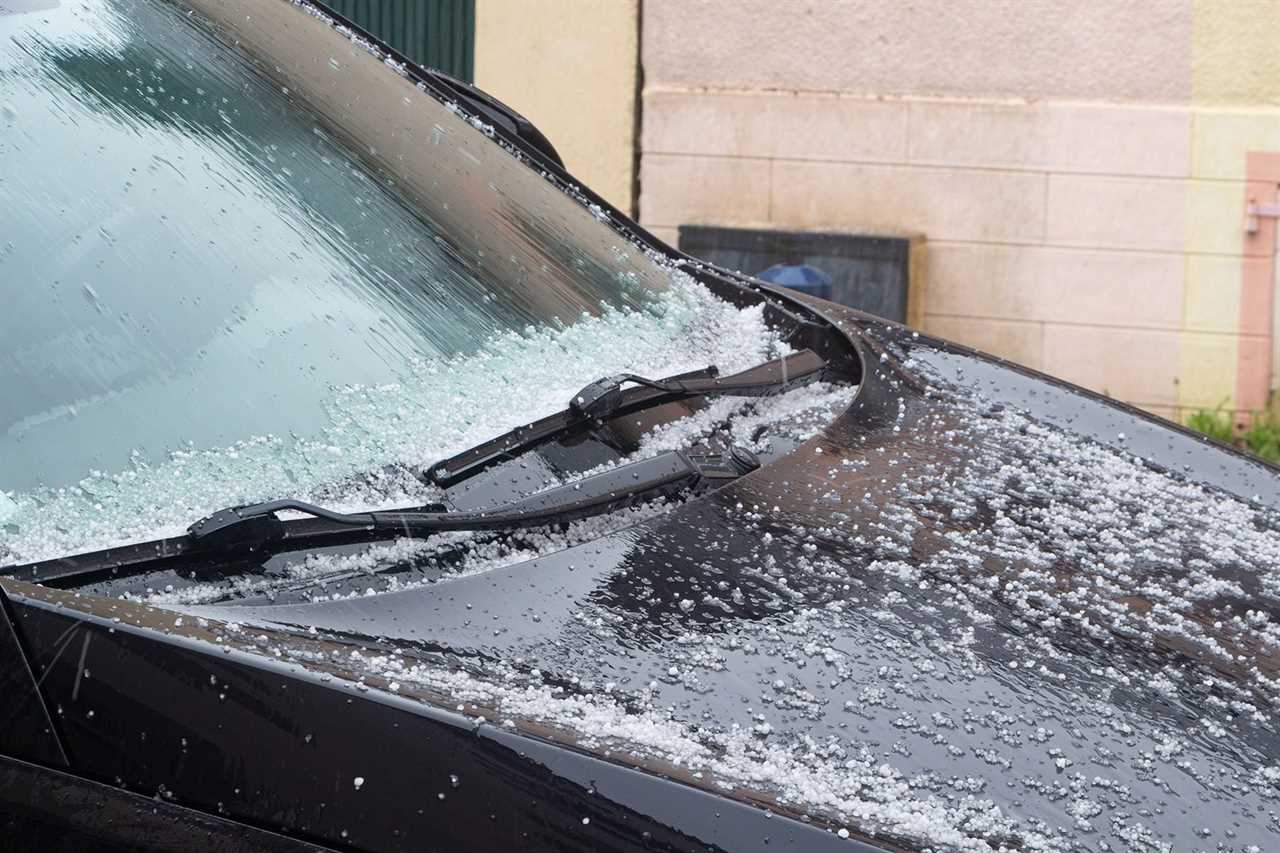The first time I saw a vehicle damaged by hailstones, it looked like someone used it for batting practice. Random size dents haphazardly covered the hood, roof and trunk lid.
According to NOAA National Severe Storms Laboratory, a golf ball-sized hailstone can travel at speeds up to 40 mph. No wonder the front windshield was destroyed and side-view mirror housings cracked.
I thought for sure the car would be totaled, but not so fast! Depending on what’s damaged, vehicles ravaged by hail, when properly repaired, can look great again. Here’s what you need to know.
What’s Considered Hail Damage?
State Farm Insurance describes hail damage as “large or small dents in the hood, doors, side panels or trunk; these dings typically aren’t uniform, may not damage the paint and may not cover the entire vehicle.” The number or size of the dents don’t matter; the dents themselves are all the evidence required.
Can Hail Cause Damage in Addition to Dents?
Yes. Besides obvious dings, dimples and dents to the body panels, hail can also leave you with:
- Chipped, cracked side-view windows and wheels or a broken windshield or rear window glass;
- Interior damaged from water entering through broken glass;
- Damaged, loose or missing body trim, antennas, side-view mirrors and mirror glass, tail lamp lenses and headlights;
- Jammed or stuck doors or side-view mirrors.
Don’t drive around with a damaged windshield; it’s not safe. You can repair minor chips yourself, but replace any windshield if a chip or crack goes more than halfway through the glass, or extends to the edge.
Windshields are also central components of your vehicle’s structural integrity, working in tandem with airbags to safeguard passengers. During a collision, the windshield supports the front airbags. The bags can’t protect passengers from hard interior surfaces or ejection from the vehicle if a compromised windshield fails.
Does Insurance Cover Hail Damage?

If you have full comprehensive coverage, then yes, you’re covered. If you only carry collision insurance, you’re out of luck. Here’s the difference between comprehensive (optional coverage) and collision coverage (required by law in most states):
- Comprehensive covers things that run into your vehicle, i.e. a tree falling on your car while it’s parked in the driveway.
- Collision covers your vehicle when you collide with something — say, driving off the road into a tree.
- According to the Insurance Information Institute, wind and hail damage caused the most insurance claims between 2014 and 2018.
Should I Claim Hail Damage on My Car?
That depends on whether it’s covered. Even if you have full comprehensive coverage, if the cost to repair hail damage totals less than your deductible, or only $100 or $200 more, consider paying for the repairs to avoid an insurance claim on your record.
However, if you’re looking at several thousand dollars in repairs that may involve paying for a rental car, then yes, it’s a claim worth making.
Is It Worth Fixing Hail Damage on a Car?
Yes. Although a personal financial decision, unless repairs cost significantly more than the value of the vehicle, fixing hail damage makes sense. Few of the dings and dents should require any paint repairs. Plus, you can DIY.
Many companies offer affordable at-home paintless dent removal services that make your vehicle look like the damage never happened. These generally run $30 to $40 for small dents and $75 or more for larger more complex repairs.
However, chipped or cracked paint probably requires traditional bodywork, or more extensive professional or DIY dent/body repairs.
Does Hail Damage Devalue a Vehicle?
Unfortunately, yes. Depending on severity, unrepaired hail damage can decrease a car’s resale value up to 100% or more of repair costs.
According to CarFax, repairing hail damage lowers the retail value of a vehicle $500 to $2,100. That’s no different than any other collision or body repair. Unless someone is looking for a bargain, hail damage simply makes a vehicle less appealing to purchase.
If an insurance company declares a vehicle a total loss, some states issue “Hail Damage” titles. This differentiates the title from more extreme circumstances like a Certificate of Destruction, Flood/Water Damage Title or Junk Title.
Did you miss our previous article...
https://rsssuperfeeds.com/life-hacks/how-to-help-your-trees-by-season






